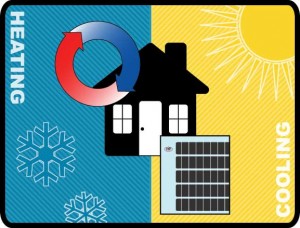 Replacement windows have many benefits to the consumer. But, reducing energy useage associated with heating and cooling the home is one of the most important benefits.
Replacement windows have many benefits to the consumer. But, reducing energy useage associated with heating and cooling the home is one of the most important benefits.
To get the most energy efficient solution for your home, it is important to understand and compare a modern window to your existing windows.

Every manufacturer brags about having the best window, and the sales and marketing experts can create a compelling story. The National Fenestration Rating Council takes the guesswork out of comparing windows by providing industry standards for the most common measures of window performance.
What gets measured and why it matters
The windows you are replacing probably have single pane or dual pane clear glass. Let’s look at what performance standards we measure and how your old windows (didn’t) perform.
 Visible Light Transmittance (VLT) If we didn’t want light to come through, we would have built a wall, right? The higher the percent, the more light is passing through the glass. Single pane – 67% Dual Pane Clear – 63%
Visible Light Transmittance (VLT) If we didn’t want light to come through, we would have built a wall, right? The higher the percent, the more light is passing through the glass. Single pane – 67% Dual Pane Clear – 63%
 U-Factor measures how well a product prevents heat from escaping.The rate of heat loss is indicated in terms of the U-Factor (or U-Value) of a window assembly. The lower the U-Value, the greater the window’s resistance to heat flow and the better its insulating value. Single pane – .83 Dual Pane Clear – .46
U-Factor measures how well a product prevents heat from escaping.The rate of heat loss is indicated in terms of the U-Factor (or U-Value) of a window assembly. The lower the U-Value, the greater the window’s resistance to heat flow and the better its insulating value. Single pane – .83 Dual Pane Clear – .46
 Solar Heat Gain Coefficient (SHGC) Solar radiation, whether directly transmitted or absorbed and re-radiated, can make a room too hot. The lower a window’s solar heat gain coefficient, the less solar heat it transmits.
Solar Heat Gain Coefficient (SHGC) Solar radiation, whether directly transmitted or absorbed and re-radiated, can make a room too hot. The lower a window’s solar heat gain coefficient, the less solar heat it transmits.
Single pane – .67 Dual Pane Clear – .62
 UV Block Invisible, yet harmful, ultraviolet (UV) rays found in every day sunlight can damage paint finishes and cause furniture, carpet and window treatments to fade. The higher the percent, the more harmful UV rays being blocked. Single pane – 29% Dual Pane Clear – 39%
UV Block Invisible, yet harmful, ultraviolet (UV) rays found in every day sunlight can damage paint finishes and cause furniture, carpet and window treatments to fade. The higher the percent, the more harmful UV rays being blocked. Single pane – 29% Dual Pane Clear – 39%
 Air Leakage (AL) is indicated by an air leakage rating expressed as the equivalent cubic feet of air passing through a square foot of window area (cfm/sq ft). Heat loss and gain occur by infiltration through cracks in the window assembly. The lower the AL, the less air will pass through cracks in the window assembly.
Air Leakage (AL) is indicated by an air leakage rating expressed as the equivalent cubic feet of air passing through a square foot of window area (cfm/sq ft). Heat loss and gain occur by infiltration through cracks in the window assembly. The lower the AL, the less air will pass through cracks in the window assembly.
Values vary with window construction
 Condensation Resistance (CR) measures the ability of a product to resist the formation of condensation on the interior surface of that product. While this rating cannot predict condensation, it can provide a credible method of comparing the potential of various products for condensation formation. CR is expressed as a number between 0 and 100. The higher the CR rating, the better that product is at resisting condensation formation. Values vary with window construction
Condensation Resistance (CR) measures the ability of a product to resist the formation of condensation on the interior surface of that product. While this rating cannot predict condensation, it can provide a credible method of comparing the potential of various products for condensation formation. CR is expressed as a number between 0 and 100. The higher the CR rating, the better that product is at resisting condensation formation. Values vary with window construction